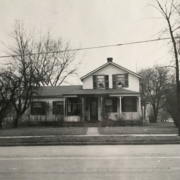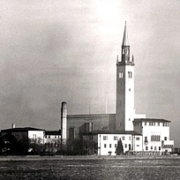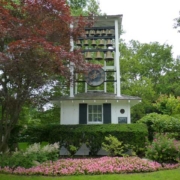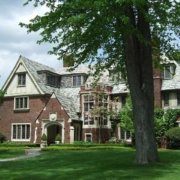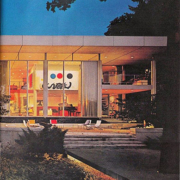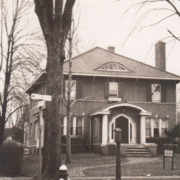Historical Architecture of Grosse Pointe – The Cadieux Farmhouse
Once upon a time, many years ago, 1850 to be exact, a young man by the name of Isadore Cadieux built a house in Detroit. 168 years later the home is still going strong, and now sits in its fourth location. Lets take a look at the story of the Cadieux Farmhouse.
In 1701 the first French settlers arrived in Detroit. As you could imagine the country was vastly different to the shores of France, not only geographically, but also culturally, and environmentally. They started to build residences, but the challenges were monumental. The materials they used in their homeland were unavailable, they had to figure our a way to keep out the bitter cold, and a method had to be perfected to stabilize their structures in order to prevent them from sinking into the mud in spring.
Having developed an architectural style to overcome the many challenges they first encountered, the French had perfected the French frame architectural style that became so popular in Detroit’s ribbon farm era.
In 1850, French descendant Isadore Cadieux relied on the building methods, perfected by the French settlers, to build a clapboard farmhouse in Detroit. Shortly after it was completed Isadore Cadieux had his new home transported by barge to a piece of land owned by his father, Michael Cadieux. Located on the waterfront at Bishop Road in Grosse Pointe Park the land was one of the many ribbon farms that dotted the waterfront of Grosse Pointes during that era.
In 1870, it is believed ‘one of the Cadieux women felt that it was unhealthy to live on the shores of Lake Saint Clair, and to alleviate her allergies had the home moved to 16939 East Jefferson, on the corner of Notre Dame’. Source: Grosse Pointe Historical Society.
The house was now in its third location where it would remain for 144 years. Constructed from wood, the original floor plan of the single story home measured only 800 square feet. It had pine floors, a narrow staircase, and hand-hewn balusters. Shortly after it was settled in its new location a second floor was added. Much of the original structure, and wood remains to this day.
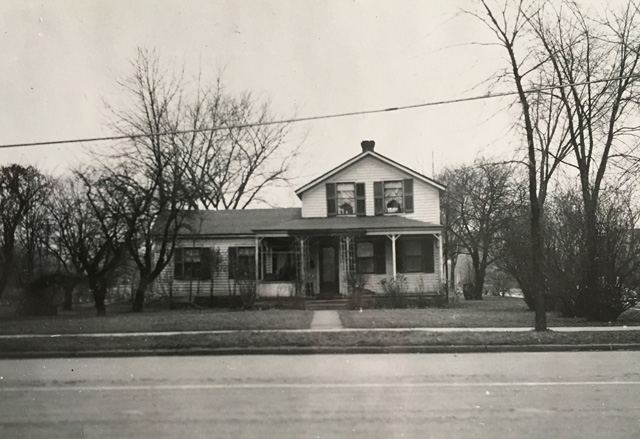
In 1983 we can confirm the now 1,100 sq ft home (approx. size) contained the rooms with the following dimensions (plus 2 bathrooms):
1st Floor
Living room with fireplace: 21’ x 15’
Dining Room: 16’ x 10’
Library: 12 x 11
Kitchen: 11’ x 10’
Screen Porch: 15’ x 8’.
2nd Floor
Bedroom 1: 13’ x 11
Bedroom 2: 10’ x 9’
In 1991 part of the house was renovated, enlarged and updated. The kitchen was expanded, the size of the dining room was reduced, the library removed, and a laundry room was added. On the second floor a third bedroom was built on, while the size of the existing two bedrooms was increased. From our records in 1992 we can confirm the following dimensions (plus 2 bathrooms):
1st Floor
Living room with fireplace: 21’ x 15’
Dining Room: 11’ x 11’
Kitchen: 17’ x 11’
Laundry Room: 8’ x 5’
2nd Floor
Bedroom 1: 17’ x 12
Bedroom 2: 13’ x 11’
Bedroom 3: 9’ x 9’
In 2011 Beaumont purchased the Cadieux Farmhouse, with a plan to develop the site that included many other properties. Not wanting the home to be destroyed they made the home available for purchase, and offered to relocate the home. It is reported over 100 individuals and organizations inquired about the chance to own the home. From the candidates Dr. Leslie Kaye (Wagner) was selected. In the summer of 2014 the home was relocated to its new location at 533 St Clair Avenue, Grosse Pointe, (a plot of land owned by Dr. Wagner) to take its place amongst the many other historic clapboard homes that are located on St. Clair Avenue. You can read the full story of St. Clair Avenue by clicking here.
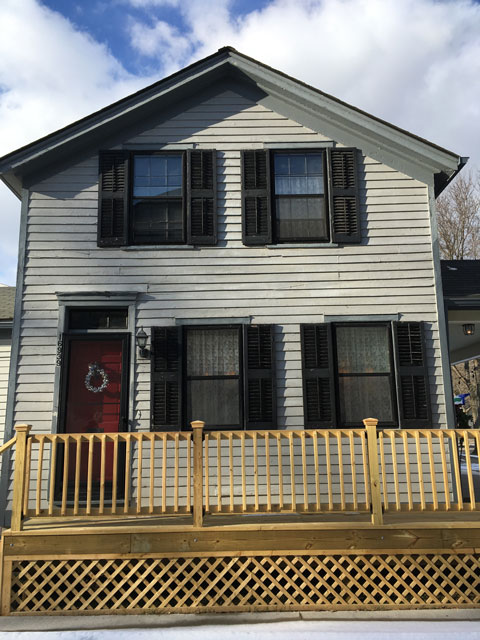
We were recently invited by Dr. Wagner to view her wonderful home. While a few additions have been made the majority of the original structure is still intact. It was amazing to see the original wooden beams, throughout the home, that were so integral to the French frame architectural style that Isadore Cadieux employed when the house was first constructed in 1850.
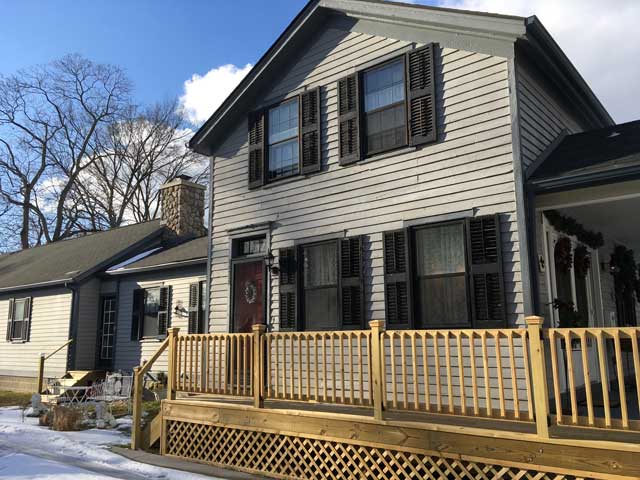
Thankfully the story of the Cadieux farmhouse has a very happy ending – as one of the oldest remaining houses in Grosse Pointe, what an extraordinary tale it has to tell.
With thanks to Dr. Leslie Wagner for contacting us, and inviting us to view her historic home.
Written by Katie Doelle
Copyright © 2018 Katie Doelle

